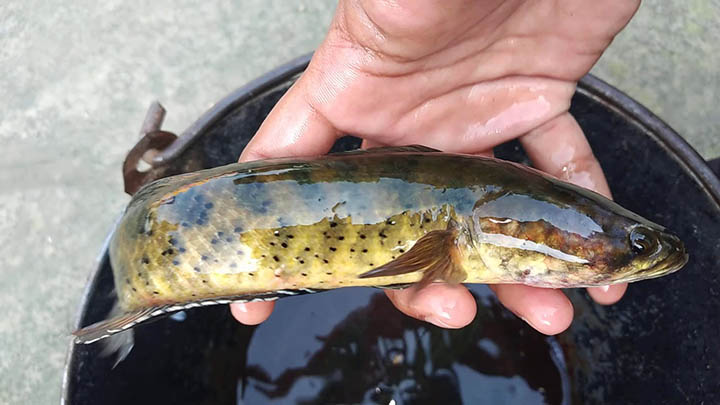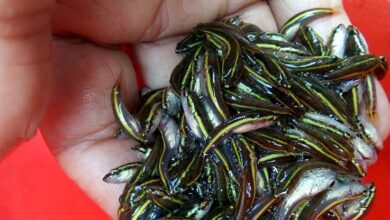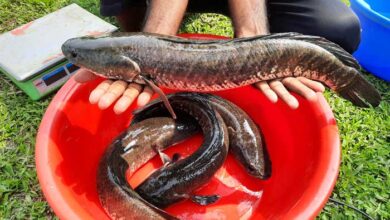
Taki fish:
One member of the Channidae family is the spotted snakehead catfish or taki fish (Channa punctata). Asia is where it first appeared, and countries including Afghanistan, Pakistan, India, Sri Lanka, Nepal, Bangladesh, Myanmar, and China are home to it. It lives in ditches, ponds, marshes, and brackish water; it especially likes the stagnant water in muddy streams. Spotted snakeheads are facultative breathers of the air.
Importance of taki fish:
Since the meat of snakeheads is said to be revitalizing, especially during recovery from severe illness, they have been valued as food fish. Fish is utilized as a remedy for a variety of illnesses and is said to offer numerous health advantages in ancient Ayurvedic medicine.
Fish that breathe air have a lot going for them in aquaculture since they can thrive in low oxygen environments. Given that live fish are sold at a significantly higher price than dead ones, this trait is crucial to the marketing of Taki fish. The spotted snakehead or Taki fish is well-liked by fishermen and is regarded as a game fish in some areas.
Culture potentialities of taki:
Spotted snakeheads are facultative breathers of the air. In addition to being able to breathe, they can live for up to four days on land if it is wet. This fish can breathe air thanks to a suprabranchial organ in its gill chamber, and it can endure in water that is almost anoxic. They can also migrate 400 meters, or 1/4 mile, by wriggling their bodies and fins from moist land to bodies of water.
The spotted snakehead is valued as a food fish, although commercial cultivation of this species has not taken off. As the demand for the fish has grown, wild catches have not kept up with the demand, and the accompanying market price has sparked a lot of interest in the controlled aquaculture of snakeheads.
Because of their white, nearly boneless flesh, ability to breathe on air, and resistance to low oxygen levels, spotted snakeheads may have a bright future in the culture. Because of their white, nearly boneless flesh, ability to breathe on air, and resistance to low oxygen levels, spotted snakeheads may have a bright future in the culture.
The majority of catfish used in aquaculture exhibit rapid growth, which is typically made possible by unique feeding habits like voracity and the capacity to eat a lot of food. In addition to being hungry, the majority of cultured catfish are omnivores, having eaten a wide range of foods in their native habitat, including vegetables. The capacity to break down starch is used to provide the needs for both protein and energy. Consequently, compared to other fish that are only carnivorous, the average amount of crude proteins required in the diet of cultured catfish is 30%, which is less than that of other fish (i.e. Salmonids, Lates calcarifer). Catfish are frequently fed high-starch raw materials such corn flour, cassava flour, and wheat and rice bran.
Most catfish can be cultivated under poor water circumstances, such as high organic matter content, sluggish water, and high fish density, because they have complementing air breathing conditions. Other species, such tilapias and cyprinids, will not even abide by such conditions.
The spotted snakehead or Taki is a desirable fish for aquaculture because of its reputation for being resilient and adaptable to a variety of water conditions.
Farhana Islam
Agriculturist, Researcher
Fisheries Resource Management, CVASU


